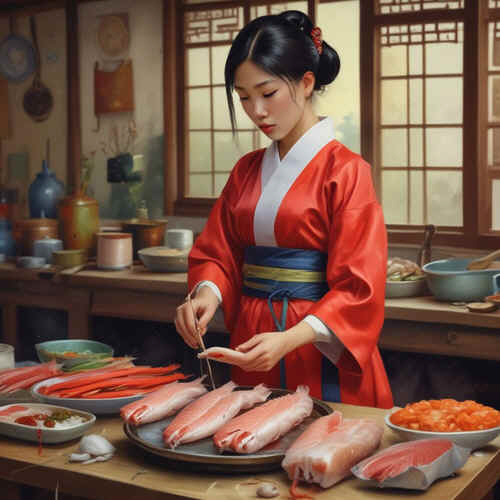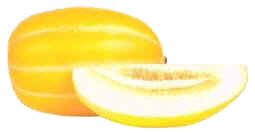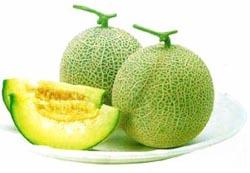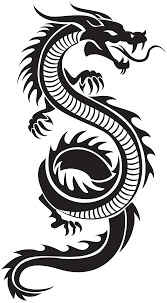| |
 |
Korean Food
by Leon |
 |
Translated by Leon of
Leon's Planet ©2000-present
I lived
in Korea for 10 years and I love
Korean Food!!!!!
Foreword
|
To
All Korean-Food Lovers:
After
10 years of
living in Korea, I made this page to help people communicate
effectively, especially when foreigners want to eat in Korea, or when
Koreans want to add English to their menus.
Sincerely,
Leon
Webmaster & Korean Food Lover
|
My
Other Korean Pages:
My
Expat Blog
(Re: My 10-yr Life in Korea)
Korean
Language Lessons
(basic Korean, free of charge, by me)
Korean
Origins
(Where did they come from?)
Konglish
1
(Konglish Interlanguage)
Konglish
2
(Konglish Lexis)
Konglish
3
(Konglish Pronunciation)
Korean
Dictionary Errors
(quite the list) |
*
Pre-note:
If you REALLY want to learn Korean (at least the basics), then check out my
Korean
Lessons Page
In case
you are not familiar with the Romanization of Korean,
here are the Korean vowels:
Romanized
Korean |
Sounds like... |
...in the following
English word |
IPA
(Int'l Phonetic Alphabet) |
APA
(American Phonetic
Alphabet) |
| a |
a |
father |
 |
ä |
| ae |
a |
at |
ć |
short
"a" |
| eo |
au/aw |
autumn |
BBC:
/ / / |
N.Y.: / / / |
| e |
e |
egg |
e |
short
"e" |
| i |
i |
inn |
i |
short
"i" |
| o |
o |
open |
o |
long
"o" |
| u |
u |
flu |
u: |
 |
| eu |
oo |
cook |
u |
 |
RE:
Korean consonants.
Consonants are pretty much the same (for all intents
and purposes) as English, but the syllable containing double consonants
is stressed. Other than that, Korean is a non-tonal language.
Kinds of Gimchi / Kimchi

Photo by Leon himself. ©2019
"Kimchi" is the old spelling, but
it probably will remain forever, because it was added to the English language
before the Korean government changed the Romanization of the Korean language
around the year 2000. The new spelling is "gimchi". I
shall use both spellings interchangeably here.
There are many kinds of kimchi. The
most popular, shown above, is cabbage kimchi, or baechu gimchi in
Korean. It is made with so-called "Chinese cabbage" which is
different from any cabbage we have in the West. It tastes better,
too. (Of course, that is just my opinion).
Chong-gak Kimchi
is made from long, white radishes. I'd estimate that they are about an
inch in diameter and about 3 or 4 inches long. The spices used and the
process to make it is, I believe, the same as with cabbage kimchi. The
texture of the radishes is hard. They have that stringent raddishy taste,
much like the red raddishes we are used to in the West.
GGak-du-gi
is made from huge white turnips. The spices and process used to make it is
the same as cabbage kimchi, I believe. I personally like the texture
(softer) and taste (less raddishy) better than the Chong-gak kimchi. It
would seem that many Koreans agree with me, because I don't see it much in
restaurants these days. {Another name for this kimchi could possibly be Mu
Kimchi, because the turnip is called Mu in Korean.}
Baek
(white) Kimchi is a cabbage kimchi, but
without the red hot chili powder/sauce (whatever they use). It is very
similar to sour kraut.
There are other kinds as well: pa
(green onion) kimchi, hobak nip
(pumpkin leaf) kimchi, sang-chu
(lettuce) kimchi, gge nip (sesame
leaf) kimchi, doraji (balloon flower
root) kimchi, and others, for which the names I do not know.
Dishes
| Romanization |
English
translation |
| ¢¢ç¢¢ç |
|
| al tang |
fish egg tonic/soup |
| bap |
steamed/cooked rice
(see appendix below for some
linguistic-cultural tidbits about this entry: click
here) |
| baek ban |
["baek" is a Sino-Korean morpheme meaning 'white' and
"ban" means 'cooked rice']
Hence, it is a bowl of steamed rice served with miscellaneous side
dishes.
(This meal is a staple in Korea). |
| ban chan |
side
dish(es) |
| bbang |
From FRENCH:
"pain", which means "bread" or more
accurately:
"baked leavened wares" (and you will notice that most, if not
all, bakeries in Korea bake their wares in the French style, and even
use French nomenclature for the various kinds of wares). |
| beon-de-gi |
silk worm pupa
(steamed and eaten as is) |
| bi-bim bap |
vegetables mixed with steamed rice
(usually contains minute
amounts of ground pork, but can be ordered without; AND, oft times
contains half-cooked egg, but you can
order it without the egg if you are a vegan) |
| boggeum bap |
fried rice
gimchi boggeum
bap = kimchi fried rice
se-u boggeum bap = shrimp fried rice
ja jang boggeum bap = fried rice w/ sweet soy
sauce
hae-mul boggeum bap = sea-food fried rice
|
| bo-shin-tang |
[literally]
"protect-body tonic/soup"; dog-meat stew
(made of dog meat)
{traditionally eaten in June to beat the heat}
|
| bu-chim gae |
same as jeon
(see jeon below)
[Bu-chim
gae is the original Korean term. Jeon is a Sino-Korean word.]
[Buchida (v.) means "stick" or "glue"
together, so buchim (n.) is a bunch of vegetables (and sometimes meat) stuck together in a pancake-like
batter] |
| bul-gogi |
[literally]
"fire meat" {barbequed marinated meat; usually beef, unless
specified otherwise; non-beef examples include: toggi bulgogi (rabbit fire-meat), or gae
bulgogi (dog fire-meat}. |
| bun shik |
[bun is a Sino-Korean morpheme meaning 'flour' and shik means 'food']
"flour
food", including ddeok, ddeok boggi, ddeok guk, ra-myeon,
guk-su, etc. |
| bung-eo |
carp (not eaten, but
see bung eo bbang below) |
| bung-eo bbang |
[literally]
"carp bread", a leavened bread baked and
filled with red beans, and in the shape of a carp |
| cham-chi |
tuna |
| je yuk deop bap |
pork over rice
(very spicy) |
| cheo bap |
sushi
[Jananese-English word] (raw fish over rice) |
| cheol-pan |
[literally]
"Iron Plate"; Stir-fry |
| dalk galbi |
chicken ribs (de-boned and cooked as spicy stir-fry) |
| ddeok |
rice cake(s)
[That is how the bilingual
lexicons in Korean translate it. I am NOT fond of that translation,
because in America, "rice cakes" are dried-puffed rice made into the
shape of a cake. Ddeok is nothing like that. I prefer to think of
ddeok as unleavened rice dough.
I have seen how it is made at a ddeok factory
on the Isle of Gang Hwa. Raw rice is poured into a machine. The
machine grinds it into a powder. Hot water is added, and it is mixed into
a very glutinous dough. Then, the dough is pressed into
"cakes".] |
| ddeok
boggi |
[literally]
"fried unleavened-rice-dough cakes" (rice-dough cakes fried in sweet & spicy sauce) |
| ddeok guk |
unleavened-rice-dough cake soup (not spicy) |
| ddon-ggasseu |
[Koreanized-Japanese Word]
breaded pork cutlet |
doeji
galbi
/dweji galbi/ |
pork ribs
(marinated, de-boned, and barbecued in front of you) |
| dol
sot bi-bim bap |
[dol means "stone";
sot means
"cauldron"]
vegetables mixed with
steamed rice served in a HOT stone bowl (or cauldron) |
doen
jang
/dwen jang/ |
soy bean paste
(fermented and dehydrated, then rehydrated for eating)
doen jang guk = soy bean paste soup
doen jang jji-gae = soy bean paste stew |
| eo-muk |
fish bar [Leon's word];
[SEE ALSO: o-deng {Japanese-Korean Word} ]
I believe that it is made the same way a frankfurter (wiener) is made,
but the ingredients are all parts of fish. |
| galbi |
ribs |
| gamja
tang |
potato stew (contains:
potatoes, pork spine, and chili powder) |
| ge |
crab
ggot ge = common variety rock
crab |
| ggueong |
pheasant |
| gim |
laver (pressed seaweed) |
| gim
bap |
rice-laver roll (steamed rice, ham, & vegetables rolled in
laver) |
| gimchi |
fermented vegetables
(usually cabbage & usually spicy) |
goang-eo
/gwang-eo/ |
flatfish
(all kinds, including halibut) (eaten raw) |
| guk-su |
[literally]
"soup water"; broth |
| gul |
oyster(s) |
| gye
ran |
chicken
egg(s) |
| hae-jang
guk |
Hang-over soup
(said to be excellent for relieving hang-overs;
there are various recipes. Some recipes
contain heart of either pig or cow (probably pig)) |
| hae-mul
tang |
sea-food stew (spicy) |
| hoe
/hwe/ |

Korean woman in traditional "Hanbok"
preparing "Hoe" (raw fish)
[Image created by A.I. and me].
|
| hoe
/hwe/ |
raw
fish (Honestly, I prefer
the Korean-style raw fish (with Korean kochu jang, which is
red-hot-chili-pepper sauce; rather than the Japanese-style with the
wasabi; Although, both are good). |
| hot
dog |
/say:
haht dohg/ = frankfurter on a stick (usually covered in batter and deep fried;
very greasy) |
| ja
jang myeon |
soy
sauce and noodles (for more info, see appendix) |
| jeon |
[literally]
"grilled food" (Korean pancake, which contains chopped up
vegetables) [Jeon is a Sino-Korean word]. It is usually served as a
side dish. (see also: buchim gae) |
| jjam
bbong |
[literal meaning:
hodge podge] A Korean dish served only in
Korean-Chinese restaurants, which contains sea-food
in noodle soup (very spicy)
{Notice: the word does NOT
come from Chinese, and that is because it is NOT a traditional Chinese dish}. |
| jji-gae |
stew (there are various kinds of
jji-gae, most common are kimchi jji-gae and
dwen-jang jji-gae) |
| jjol
myeon |
a
VERY spicy egg noodle dish, served cold |
| jju-ggu-mi |
???
(a really
small species of the octopus family) [Served as a spicy
stir-fry] |
| kong namul |
bean sprout |
| kong namul guk |
bean sprout broth |
| kong
namul guk bap |
broth of bean sprouts and steamed
rice,
served boiling
hot in a stone bowl with a raw egg placed on top and rice on the side. One
is supposed to put the rice in the broth and mix. The egg quickly becomes
cooked because the broth is so hot. [Culture:
Koreans love their food, soups and drinks hot... really HOT!] |
| L.A.
galbi |
beef ribs (marinated, de-boned, and barbecued in front of you) |
| man-du |
dumpling(s) [only
no fruit inside]; usually vegetables and/or meat are
inside a pasta-noodle-wrap-like thing
I would call them: wonton(s) [Cantonese-American
word];
[Note: in
Han-Chinese, the word is: jiao3 zi.] |
| mae-chu-ra-gi
al |
quail
eggs [served hard boiled as
a side dish] |
| mo-mil |
buckwheat
noodles (served in Japanese-style restaurants and eaten dipped in a kind
of soy sauce) |
| muk |
"jello" (an
edible gelatinous substance);
[NOTE: there are various kinds
of muk:
dotori muk = acorn jello (brownish in color)
maemil muk = buckwheat jello (greyish color)
nokdu muk = green bean jello (greenish color)
? muk = jellyfish jello (whitish in
color) |
| myeol-chi |
anchovies
(eaten dried,
or rehydrated as a side dish) |
| myeon |
noodle |
| nakji |
???
(small species of the octopus family which is unknown to
me, and Yahoo bilingual dictionary) |
| neng
myeong |
cold noodles (noodles served
over ice or in ice-cold water) |
| nu-rung-ji |
rice crust (from the rice pot)
served in boiling water.
(Koreans don't
waste anything. The pot containing the remaining rice crust is filled with
water and boiled. Then, it is served as a dessert. Koreans love
it. I don't particularly like it, but I don't hate it either.) |
| o-deng |
[Koreanized
Japanese word] "fish bar" [See
also: eo-muk] |
| o-jing-eo |
cuttlefish
or calamari (sometimes called squid, but this is incorrect, because squid is
much bigger) |
| o-jing-eo
deop bap |
cuttlefish
or calamari legs over rice
(quite spicy) |
| omu-rice |
omelet over rice |
| ra-myeon |
noodle
soup;
[ALSO, in America,
'Ramen', which is a word borrowed from Japanese] (Korean variety is more spicy
than the Japanese variety) |
| sa-cheol
tang |
[literally]
"four-season tonic/soup"; dog-meat stew
(made of dog meat, same as
bo-shin tang) {NOTE: probably
the name was invented to increase sales in other seasons besides June}
|
| sam-gye
tang |
[literally]
ginseng & chicken tonic/soup
{NOTE: When you find your energy zapped due to the Korean heat, try some chicken
'tonic' soup. I don't know if it really works to fight the heat, but it
can give you energy, because it contains very healthy ingredients, such as
ginseng, Chinese dates, chestnuts, all of which are considered to be very
healthy in Korea.} |
| sam-gyeop
sal |
[literally]
3-layer flesh
(Korean BACON) served barbecued
and eaten with vegetables and rice. |
| saeng-seon |
(fresh)
fish (i.e., fish meat, not living fish) |
| saeng-seon
ggasseu |
breaded fish cutlet |
| san
chae |
[literally]
"Mountain Vegetables" or "Wild Vegetables";
Mountain-grown vegetables |
| san-chae
bi-bim bap |
mountain-grown
vegetables over rice
[NOTE: the idea is that the vegetables grown in the mountain
are supposed to be more healthy, probably because they are organically
grown.]
|
| san-nakji |
raw (small) octopus [try it!
the legs are still moving and the suction cups sick to the inside of your
mouth. It's great!] |
| seol-leong
tang |
ox-bone
broth; a tonic broth made from boiling chopped up cow bones (considered extremely
healthy), usually contains noodles. |
| se-u |
shrimp
wang se-u = prawns [literally:
king shrimp] |
| ssal |
raw rice |
| tang-su
yuk |
sweet & sour pork
[in this case "tang" means: 'sugar'
and/or 'sweet'] |
| tubu |
tofu
[English word is borrowed from Japanese];
bean curd
sun tubu = a soup made of
soft tofu |
| twi-gim |
deep-fried
food;
[AKA: tempura {Japanese-English Word}
] |
u-dong
/oo-dong/ |
Japanese style noodle soup |
| yeot |
pumpkin nougat
(click
here to learn about Korean culture related to this specific food
item) |
| yuk-gae
jang |
BEEF
& noodle soup (very, very spicy!. It is great in
the winter, because the red-chili pepper powder increases circulation and makes
you feel very warm.) |
Fruit (all
botanical fruits; the seed-bearing part of various plants)
| Romanization |
English
translation |
| ¢¢ç¢¢ç |
|
| bae |
pear,
but shape and texture is different than a Western pear; in fact, I'd say
it is more like a pear-apple. We (our family) used to have a pear-apple tree in
our yard, imported from Asia. I swear that it is the same as the
Korean pear. |
| ba-na-na |
banana |
| bok-sung-a |
peach |
| cham-oe |
chate
melon (see pic) |
| dae-chu |
Jujube;
Chinese date |
| ddal-gi |
strawberry |
| gaji |
[US]
eggplant; [UK] aubergine |
| gam |
persimmon
ggot gam = dried persimmon |
| go-chu |
chili
pepper |
| gwa-il |
FRUIT, but does NOT include the non-sweet fruits, such as tomatoes, oriental green apricots
(maeshil), ginkgo fruits, squash, peppers, eggplant, etc. {see also:
"yeol-mae"} |
| gyul |
tangerine;
mandarin orange |
| ho-bak |
edible
gourd; squash
nulgeun
hobak = pumpkin
ae hobak = zucchini [US]; courgette [UK] |
| jadu |
plum |
| mae-shil |
green
apricot |
| melon |
cantaloupe |
| mo-gwa |
Oriental
quince |
| o-raen-ji |
orange |
| podo |
grape |
| sa-gwa |
apple |
| sal-gu |
apricot |
| san-ddalgi |
raspberry |
| su-bak |
watermelon |
| yeol-mae |
all
botanical fruits, including tomatoes, peppers, squashes, raspberries, green apricots, eggplant, etc. |
| yu-ja |
Oriental
citron |
Nuts
| Romanization |
English
translation |
| ¢¢ç¢¢ç |
|
| a-mon-deu |
almond |
| bam |
chestnut |
| cae-shu |
cashew |
| ddang kong |
peanut |
| Eun-haeng |
ginkgo |
| ho-du |
walnut |
| jat |
pinenut |
| pe-can |
pecan |
Vegetables
| Romanization |
English
translation |
| ¢¢ç¢¢ç |
|
| bae-chu |
Oriental
cabbage / Chinese cabbage |
| dan-mu |
[literally]
sweet turnip: BEET |
| dan-mu
ji |
sweetened
white turnip preserved in vinegar |
| doraji |
root of
Balloon Flower Planet |
| go-gu-ma |
sweet
potato |
| kong |
soy bean |
| ma-neul |
garlic |
| mu |
turnip |
| pa |
green
onion; leeks |
| sang-chu |
lettuce |
| shi-geum-chi |
spinach |
| yang-bae-chu |
[literally]
Western cabbage; AKA: white cabbage |
| yang-pa |
[literally]
Western onion; AKA: yellow onion |
Herbs
| Romanization |
English
translation |
| ¢¢ç¢¢ç |
|
| in-sam |
ginseng |
| ssuk |
Asian mugwort (more
edible than Western varieties) |
| yul-mu |
adlay; adlai; tears
of job |
Miscellaneous Comestibles
| Romanization |
English
translation |
| ¢¢ç¢¢ç |
|
| doen jang |
soy bean paste |
| gan jang |
soy sauce |
| go-chu jang |
chili sauce |
| hu-chu |
black pepper |
| jang |
sauce; paste |
| sa-tang |
CANDY
["tang" is (in this case) a Sino-Korean morpheme meaning sugar;
Korean sa-tang does not include all sweets, e.g., chocolate is not 'sa-tang')
{it is what we Americans would classify as "hard candy"} |
| sam jang |
a paste made of
three other pastes |
| so-geum |
salt |
Drinks (Key Words:
Korean soft drinks, Korean liquor, Korean alcohol)
| Romanization |
English
translation |
| ¢¢ç¢¢ç |
|
| An-dong so-ju |
[literally:
"burning liquor from Andong"] rice
brandy
unlike "regular" soju
(see below), which is made from sweet potatoes, Andong soju is
made from rice. It is akin to Japanese sake. [Note: sake
is NOT a rice wine as it is commonly known. It is a rice
brandy. To learn the difference between wine and brandy, see my
liquor page]. |
| baek-se-ju |
[literally: 100-year
liquor] a wine made of 10 herbs; mostly ginseng; It's
not called "100-year liquor" because it is aged 100 years, but
rather because it is supposed that frequent drinkers thereof, shall live
to be a 100 years old. I asked a native Chinese about the meaning
of the Chinese characters, and she said that the meaning was that the
drinker would live to be a 100 years old. So, I guess the Koreans
got it right. |
| bok bun ja |
[a
brand name, which literally means: "pot-pisser", 'cause
(so I'm told), the drink makes one piss a lot, but it never made me
piss, so I think that whoever told me that doesn't know the real origin
of the name of the drink]
raspberry wine |
| cha |
tea
nok
cha = green tea
hong cha =
red tea (in English: black tea) |
| dong-dong-ju |
a kind of rice wine
(not like Japanese sake, similar perhaps, but sake is 20% alcohol
and dong-dong ju is probably around 10% alcohol). |
| long tea |
Long Island Ice Tea |
| mak-keol-li |
a kind of crude rice
wine,
like dong-dong ju, but dong-dong ju is sweeter and has a higher
viscosity |
| maek-ju |
beer |
| Picari Sweat |
An
ionized drink (not sure how
it's made) |
| podo ju |
[literally]
"Grape Liquor"; Grape Wine |
| pok tan ju |
[literally:
"bomb liquor"] a mixture of one or more HARD liquors
with BEER. |
| shik-hye |
rice
water (made by boiling rice
and dissolving malt into the mixture, and served cold) |
| so-ju |
[literally:
"burning liquor"]
usually:
sweet potato whisky |
| sam-da-su |
[literally]
Three-abundances Water; from the Isle of Three Abundances
(AKA: JejuDo), my favorite brand of bottled water (actually from
JejuDo). |
| su-jeong-gwa |
persimmon
tea; soft drink made of
persimmons, ginger, honey and cinnamon, served COLD! |
| yang-ju |
[literally] Western
liquor; generally Corn (Scotch) Whisky,
but can also refer to grape wine and brandy. |
Appendix:
Bilingual Dictionary Errors regarding
Korean Food
BEWARE:
The
Korean-English / English-Korean bilingual dictionaries are often wrong about the translations of some
foods. Here are a few of the corrections:
| Korean word |
wrong translation |
correct translation |
| ¢¢ç¢¢ç |
|
|
| ba-ga-ji
|
gourd (not
wrong, actually) |
to
be more specific... it would be
a non-edible gourd
(I just wanted to
make that clear)
{It is often used to make bowls or scoopers.} |
| cham-oe
|
musk
melon |
chate
melon (see pic) |
| ho-bak
ae-hobak
neulgeun-hobak
|
pumpkin
baby pumpkin
old pumpkin
|
edible gourd; squash
[US] zucchini squash;
[UK] courgette
[US] pumpkin squash;
[UK] pumpkin
|
| mae-shil
|
plum;
ume |
Japanese
Apricot
(or Oriental Apricot)
I call it the "Green Apricot" |
| me-lon
|
melon |
cantaloupe
melon |
| mo-gwa
|
quince |
Oriental quince
(as opposed to the Western quince; the two are a
bit different) |
| yu-ja
|
citron |
Oriental citron
(as opposed to the Western citron; the two are quite
different) |
For
more bilingual dictionary errors, click here
Addendum
to the table above:
 |
 |
| Korean Name: Chamoe |
Korean Name: Melon |
| Scientific Name: Cucumis
melo var. makuwa |
Scientific Name:
Cucumis melo |
| English name: none |
English name: Cantaloupe |
| Kind: Chate Melon |
Kind: Musk Melon |
| Taste: tastes like a cross between a
honeydew melon and a cucumber |
Taste: tastes like a cross between an
American cantaloupe and a honeydew |
Korean
Food Culture
bap
= steamed rice (but metonymously also means "meal").
[CULTURE:
When a Korean asks (in his/her mother tongue), "Have you eaten steamed rice
today?", it means: "Have you eaten a meal today?"; and it
is more a formality than an actual question. If you say,
"No," The Koreans are often left wondering what to say, and
usually end up saying, "Well, you'd better eat." Some Koreans
might feel obligated to feed you, if you say, "No." So, if you
don't want to put a Korean through the trouble of feeding you, it is best to
say, "Yes."]
yeot
= pumpkin nougat
[CULTURE:
Superstition indicates that if eaten right before taking
a test, the eater will score well on the test. So, right around final exam
time, one can see lots of yeot venders on the street.]
ja
jang myeong = From the Chinese: Ja Jiang
Mian, which means: "[?] - sauce [+] noodles"
After living in China for
a year, it has come to my attention that EVERY restaurant in China serves Ja
Jiang Mian. AND, although I asked several Chinese people, nobody
seemed to be able to tell me what Ja means. One guy told me that it meant
nothing, and I thought that he meant that it meant "nothing", but I
now realize that what he meant to say was that he didn't know what it meant, but
was too proud to admit it. Every Chinese character has
some meaning, even if that meaning changes by conjugating with another Chinese
character. Another person told me that Ja Jiang is just the name of
a type of sauce (Jiang meaning sauce). Mian means noodles.
The
Korean version of Ja Jang Myeong is much sweeter than the Chinese version (which
is quite bitter); AND, therefore, the Korean version is much more suited
to my tastes, although the Chinese version is not all that bad.
nok
cha = [literally] green tea (made from the same leaves as
black tea, but
the leaves are dried immediately, retaining their green coloring) [Koreans
are very proud of this tea, which to my knowledge, is a Korean original & is
very popular in Korea. They are especially proud of it for its
cancer-preventative qualities]
hong
cha = [literally] red tea
(in English => black tea) (the leaves are first
fermented in water then dried, hence the red color)
| |

English |
|

Spanish
|

Korean |

Mongolian |

Chinese |
|

Parents of
Homeschool
|
|

Halloween
|
|

Thanksgiving
|
|

Winter Solstice
|
|

Christmas
|
|

New Years
|
|

Chinese Lunar
New Year
|
|

Valentine's
|
|

|
|

Easter
|
|

All About
Dr. Seuss
|
|

Roald Dahl
|
|

Prepper's
Pen |
|

Ways to
Help
Leon's Planet
|
|